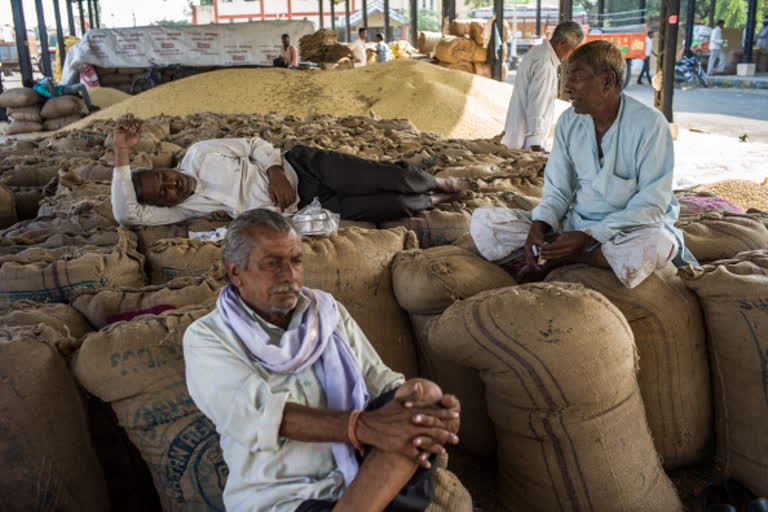Hyderabad:The central governments over the years have been running various farm support policies to address the issue of farmer distress in India -- a country where agriculture employs more than 50℅ of the Indian work force. One such policy, price deficiency payment scheme (PDPS), has always been a subject of debate as the actual benefit to farmers remains questionable.
A research conducted by economists at the Reserve Bank of India (RBI) and Indian School of Business (ISB) has now indicated that such a policy can indeed adversely affect a farmer’s earnings by pushing down the selling price of crops, thereby also increasing the payment burden on governments.
What is PDPS?
Let us first understand what exactly is PDPS. PDPS was first launched by the Madhya Pradesh government in October 2017 as the Bhavantar Bhugtan Yojana (BBY) for eight crops.
Later, in 2018, it also became a part of the central government’s Pradhan Mantri Annadata Aay Sanrakshan Abhiyan (PM-AASHA) to benefit farmers producing oilseeds.
The scheme basically helps farmers by compensating them for losses incurred when wholesale market prices are lower than minimum support prices (MSPs).
Though, the actual amount of compensation is determined by an average selling price (ASP) – a metric set by the government after studying prevailing market prices within the state and markets outside the state where the commodity is traded.
Read more:Know how you can open an account without visiting a bank
So, when a farmer’s selling price is lower than MSP but higher than the ASP, then the difference between the MSP and actual sale price is paid to the farmer. If the selling price is lower than both MSP and ASP, the payout is capped at the difference between MSP and ASP.
The farmers have to register themselves at mandis with details such as the total area sown, likely produce and bank account details. Notably, they are eligible for compensation only if they sold their produce during a particular window in the mandi where they had registered themselves.
The actual difference in the selling price and the modal rate is transferred via direct benefit transfer (DBT) into the Aadhaar-linked account of the beneficiary.
What the research found
The research -- conducted by Abhinav Narayanan, a research economist at RBI, and Shekhar Tomar, assistant professor in the Economics and Public Policy area at ISB – studied pricing patterns and quantity arrival of two major crops Urad and Soyabean during the BBY scheme period in 2017 in Madhya Pradesh.
